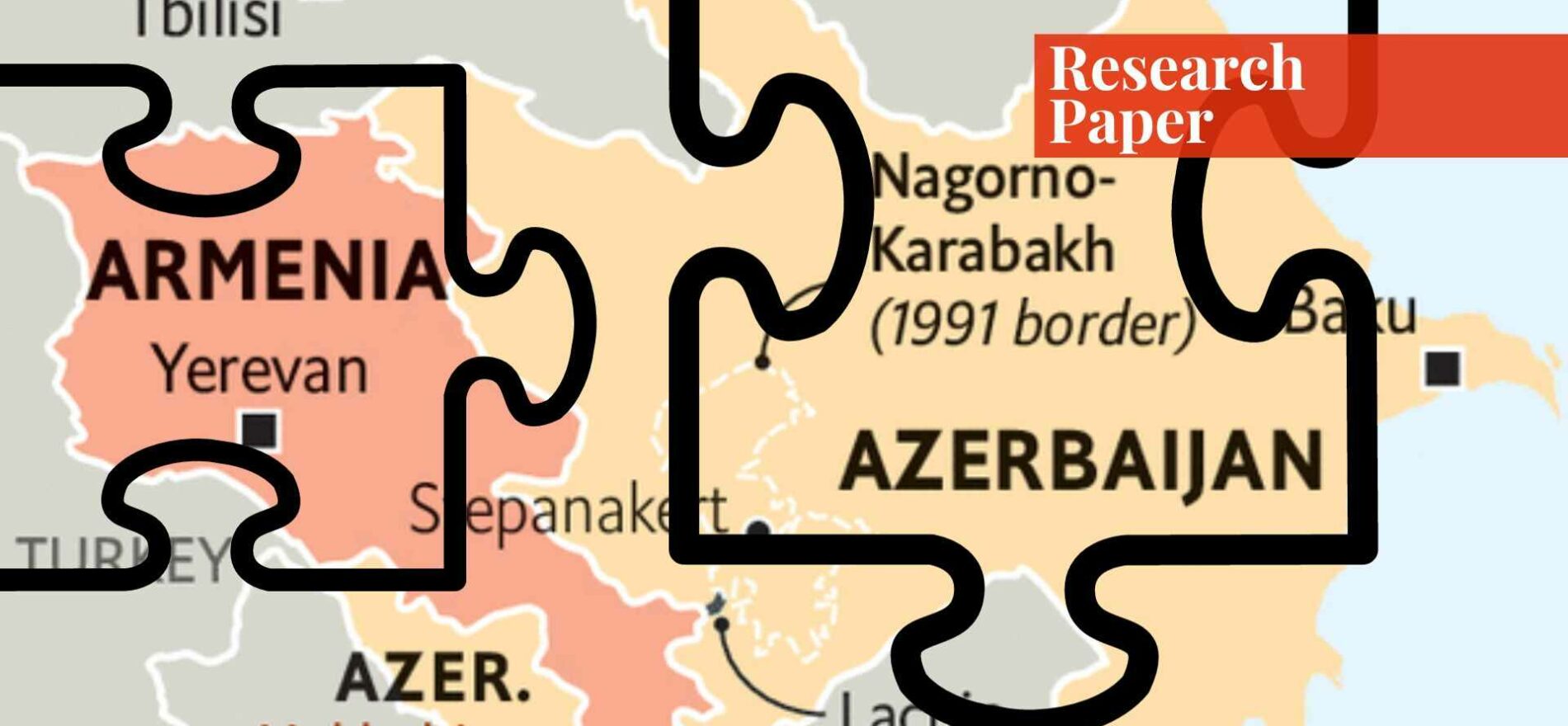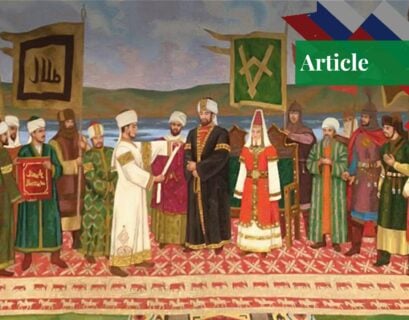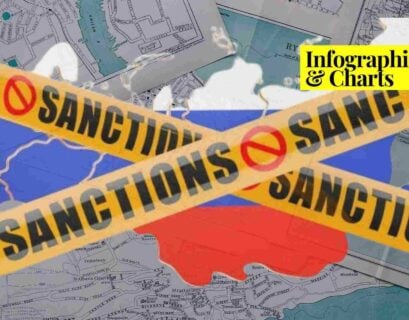Introduction
Conflict management is a process to alleviate the negative aspects of any conflict. It has been a way to end conflicts and has been practiced in the human community in different ways before it was accepted as a sub-branch of international relations studies recently (John & Niyogi. Shyamalendu, 2020). Mediation through diplomatic efforts in a peaceful way is the most applicable way to resolve conflict in this modern era, especially to cease the ongoing war that has taken people’s lives (Khairunnisa, 2021).
Historically, after World War II, the Cold War emerged, and it has led to the emergence of regional conflicts that are still aligned with the two superpowers. After the Cold War ended, the Soviet Union dissolved, and many countries gained their independence from it. The breaking of the Soviet Union did not easily permit countries to depart as politically stable.
In Azerbaijan, a conflict occurred exactly after its independence in 1991. It was threatened by Armenian occupation in its internationally recognised territory. The conflict lasted almost 30 years until Azerbaijan regained its territory during the Nagorno-Karabakh War II (Saribayova, 2023).
Components of Conflict Management
The roots of conflict resolution extend back at least as far as the Greek city-states and the Roman Empire with the utilisation of third-party mediation in international relations, and it is stated that the main root of social conflict is leadership (Mukhlis & Rusli, 2023). Such a mediation attempt has been done by the Greeks to settle the conflict between the Roman Empire and Perseus in the Third Macedonian War. Furthermore, the mediation tactics of ancient Greece were influenced by Greek mythology in the myth of Hades and Persephone (Gutierrez, 2011).
Conflict management offers alternative solution methods to conflicts that cannot be solved with traditional laws. Mediation by third-party intervention as the main method of conflict management is primarily used when two parties have a conflict that leads to more violence. For domestic conflict, external intervention is sometimes necessary when the national authority with an existing legal system is incapable of settling the conflict.
Although its applicability towards domestic affairs is considered as the consequence of the weakening state sovereignty, it may encourage states to be more involved in negotiation to provide peace and justice for its citizens. Following the end of World War II, the United Nations was established to maintain world peace. It designed conflict management as a paramount instrument in assuring global peace and security as well as determined it as the main duty of the UN.
The UN Charter defines all international conflicts to be resolved by peaceful means based on the principles of justice and international law. The concept of peace and security is used in the UN and should be applied in conflict management (Avtar et al., 2021). According to that concept, it reflects both liberal and realist theories of international relations. Although realist theory places more emphasis on security and the liberal theory on peace, both theories share the same ultimate objective of giving people a place to reside in safety and harmony.
Conflict management is primarily based on liberalism, even though it reflects both theories because in conflict management states are not the only actors; international institutions, nongovernmental organisations, multinational corporations, military groups, and even individuals can be the actors in resolving conflict.
The subject of conflict management is the conflict itself; it is neither a positive nor a negative phenomenon because it is a natural action. Although it is difficult to describe, Akyesilmen (2021) tries to define conflict based on other existing definitions as the degree of intensity and level of violence provided to the internal and environmental potential, perceptual or real threats or obstacles such as individuals, groups, nations, and states by the organised parties that are mutually dependent to achieve a political, economic, cultural, religious and philosophical goal of the conflict differ.
Conflict management involves several crucial components, including players, measurements, phases, and procedures. Each actor has a set of skills and specialties, as well as limitations on what they can and cannot accomplish. As a result, not every actor can be useful at every stage of conflict resolution. Actors and measurements can therefore be categorised based on their level. Political and military figures who are warring parties’ representatives or leaders make up the first level of actors. They utilise outcome-focused tactics including penalty, negotiation, mediation, and facilitation.
The second tier of participants in a dispute consists of professional civil mediators who are both international and local such as NGO representatives who take steps to facilitate and consult the conflict. Local grassroots groups and political NGOs that focus on process and structure such as capacity building, training, development, human rights work, and political education, make up the third group of players.
The conflict management phases of conflict settlement, conflict resolution, and conflict transformation may be examined and analysed with the actor-measure analysis. Conflict settlement refers to all activities and methods targeted at directly eliminating violence without understanding the origins of conflict (Wallensteen, 2018). This stage is a limited win-win situation with a focus on immediate results and peace.
At this point, peace refers to the absence of violence rather than the right solution. Third-party attempts to achieve an agreement to end the violence in the dispute. The first-level actors will participate in this stage by employing strategies such as facilitation, mediation, negotiation, arbitration, and if required, economic sanctions. The outcome of conflict resolution is a ceasefire, though tensions between conflict parties remain.
The second-level actors will participate in this stage of the process-oriented conflict resolution process, where they will solely serve as mediators and facilitators. All parties to a conflict acknowledge it as a problem they both share and a solution-focused strategy emerges. Finding a solution that would satisfy all sides of the disagreement is its main objective. The parties have now acknowledged that there is a problem and that it affects them all. Here, focusing on common interests and utilising the notion of teamwork are the main goals.
In addition, the final stage of conflict resolution is conflict transformation, which is the ultimate aim of all conflict resolution strategies. The previous two stages are viewed as transitory since they do not completely put an end to the conflict because hostilities might flare up at any time, and because no peace accord has been made. This phase focuses on structural transformation and long-term peace-making. The third-level actors will perform their duties in the areas of human rights work, political education, training, and capacity building.
Strategic Dialogue Plan Framework (SDPF)
Conflict analysis is a tool to better understand the conflict due to the fact that it is a comprehensive analysis of the processes involved in identifying the historical context, origins, actors, and characteristics of a conflict, as well as planning and formulating strategies for resolving it. The Strategic Dialogue Plan Framework (SDPF) has been applied to most international conflicts (Bourgoin et al., 2018). This framework is primarily used to develop peace projects; however, it is also used as a conflict analysis framework.
Conflict management involves strategic and dialogue or negotiation elements, in addition to humanitarian and moral ones. An analysis framework including both strategy and dialogue will result in a more successful outcome to the conflict. It offers a wide range of options for action as well as a comprehensive framework for understanding conflict. As a result, the analytical framework provides several possibilities for designing successful tactics.
The main elements of the strategic dialogue plan are the identification of the problem, actor analysis, and the process of creating strategic goals and recommendations. It focuses on comprehending the problem, its political, economic, social, and cultural sources, dynamics, and difficulties. Several factors can define conflicts, including background analysis, which includes politics, economy, society, culture, structure, and the interests of the actors involved in the conflict, the cause of the conflict from various groups such as structural, political, economic, environmental, and cultural, and the current state of conflict, which includes elements such as intensity, scopes, duration of the conflict, and the most recent developments (Baron, 1991).
In actor analysis, the structures, interests, requirements, positions, weaknesses and strengths, opportunities and threats of the actors, often called parties, involved in the conflict, and their relations with each other are examined. Actors are classified as direct or indirect actors, or primary and secondary actors in terms of being parties to the conflict.
To analyse the actors, the SWOT analysis is used as the main element of strategic dialogue. It enables the mediator to see the parties, their priorities, interests, and requirements more clearly and to develop strategic suggestions in a brief time. After analysing the actors of the conflict, the next step is strategy formulation. In this stage, the mediators or the third party sets targets for the peace plan considering the data received from the analysis of agendas, requirements, positions, weaknesses and strengths, opportunities, and threats.
It also develops strategic suggestions to achieve these goals which differ according to the context of the conflict. Similar to the stages of conflict management, the aims might include conflict settlement, resolution, and transformation. The strategic objective is to swiftly defuse the dispute by establishing a ceasefire agreement. Implementation is the last stage of the strategic discussion plan. When conflict has been analysed, this phase may be completed. The plan details the resources allotted and how the dispute resolution process will be monitored.
The Nagorno-Karabakh Conflict
The conflict is primarily a struggle for territory between the Armenia-backed Artsakh Republic and the Republic of Azerbaijan. Nagorno-Karabakh itself is internationally recognised as the territory of Azerbaijan but is occupied by the Armenians. The Armenian people migrated to this region during the early 19th century. The quickly escalating anti-Azerbaijani feelings among the Armenian populace led to the persecution of the area’s ethnic Azerbaijanis.
Azerbaijanis were compelled to flee Karabakh in large numbers. At the beginning of 1988, hundreds of people abandoned their homes and arrived in Baku. At the beginning of the first Nagorno-Karabakh conflict, which ended in the mass murder of ethnic Azerbaijanis and Armenian control of the region, Armenians created the autonomous Republic of Artsakh. In 1994, after Russian mediation, the two sides signed the Bishkek Protocol, which established a cease-fire (Cornel, 2015).
However, despite these precautions, border confrontations between Armenians and Azerbaijanis occurred between 2008 and 2020. For example, in Mardakert in 2008, both Azerbaijan and Armenia blamed one other for internal Armenian difficulties (BBC, 2008). As a result, the United Nations enacted Resolution 62/243, which called for the immediate withdrawal of all Armenian soldiers from Azerbaijani territory. The Armenians ignored this decision, and they remained in Azerbaijani territory until the commencement of the Nagorno-Karabakh war in 2020, which concluded in November of that year. Armenia committed on that day to restore the Azerbaijani territory it had captured as part of the cease-fire agreement.
Theoretical Analysis
The initial step to analysing the conflict according to the strategic-dialogue plan framework is defining the problem. In 1828, the Turkmanchay treaty was signed between Russia and Persia which provided resettlement of Armenians from Persia and the Ottoman Empire to the Caucasus region, in particular the current territory of Armenia, Georgia, and Azerbaijan. Hundreds of thousands of Armenians left Persia and Ottoman territory and moved mostly to Erevan and Karabakh where Azerbaijani reside (Jannatoglu, 2016).
Russia desired to control Caucasus by implementing the policy of Christianisation and resettlement of Armenia which aimed to act as a bridgehead for Russian dominance on the edges of the Middle East. The total Armenian population in Azerbaijan increased gradually and became more than the Azerbaijani population.
Actor Analysis
The main actors are Azerbaijan and Armenia as the parties in conflict. Russia is also an actor with extensive influence in the region and that has supplied both Azerbaijan and Armenia with military ammunition. Other than that, the OSCE Minsk group which is co-chaired by Russia, France, and the United States with permanent members including Belarus, Germany, Italy, Sweden, Finland, and Turkey, as well as Azerbaijan and Armenia, also play as the third party to mediate the conflict.
Each actor has a different interest towards the conflict. Azerbaijan’s interest is to retake its occupied territory from Armenia and strengthen its national sovereignty. Armenia demands that the Armenian population in the Nagorno-Karabakh region become independent and not under an Azerbaijani ruler. Russia desires to control the region by spreading its influence to both conflict parties (Cornel, 2015).
Due to the fact that Russia maintains a military station in Armenia, it was thought that this country would be closer to Russia than Azerbaijan. Turkish influence in the Caucasus and the Mediterranean is also considerable. As a result of President Erdogan’s declaration that Turkey will defend Azerbaijan in the crisis, it is recognised as the country’s principal ally. He also lambasted the OSCE Minsk Group for underestimating the violence and failing to find a solution.
As a result of the bloodshed of the first Nagorno-Karabakh conflict, hundreds of thousands of both Azerbaijani and Armenian citizens were forced to leave the area. The OSCE Minsk Group was unable to resolve the war, and it erupted repeatedly until 1994, when Russia was able to do so and all sides agreed to a cease-fire. The mediator in this scenario was the first-level actor; the issue was not entirely resolved as the goal was just to lessen its level of violence.
Following the 1994 ceasefire, many clashes again occurred between the two parties. Between the first ceasefire, the OSCE Minsk Group (Abilov, 2018) played its role as a second-level actor to facilitate and provide consultation to mediate the conflict in the conflict resolution stage, the second level of the conflict management stage. The second Nagorno-Karabakh War re-erupted in 2020 and it was the extensive clash after the first Nagorno-Karabakh war.
After Armenia lost the war, Russia also served as a mediator for the settlement of the dispute. Azerbaijan successfully reclaimed its land in Nagorno-Karabakh as a consequence of this conflict, and both sides later agreed to a peace accord. Now that the peace agreement has been signed, the conflict transformation process is being used. Although Armenian forces have already departed from the region, this stage is a long-term objective that will take more time to achieve.
References
- Abilov, S. (2018). OSCE Minsk Group. Insight Turkey, 20(1), 143–164. https://www.jstor.org/stable/26301072
- Aljazeera. (2021). Armenia Says Soldier Killed in Border Shoot-Out with Azeri Forces. https://www.aljazeera.com/news/2021/5/25/azerbaijan-denies-firing-at-armenian-positions
- Avtar, R., Kouser, A., Kumar, A., Singh, D., Misra, P., Gupta, A., Yunus, A. P., Kumar, P., Johnson, B. A., Dasgupta, R., Sahu, N., & Rimba, A. B. (2021). Remote Sensing for International Peace and Security: Its Role and Implications. Remote Sensing, 13(3). https://doi.org/10.3390/rs13030439
- Baron, R. A. (1991). Positive effects of conflict: A cognitive perspective. Employee Responsibilities and Rights Journal, 4(1), 25–36. https://doi.org/10.1007/BF01390436
- BBC. (2008). Fatal Armenian-Azeri Border Clash. http://news.bbc.co.uk/2/hi/europe/7278483.stm
- BBC. (2020). Armenia, Azerbaijan and Russia Sign Nagorno-Karabakh Peace Deal. https://www.bbc.com/news/world-europe-54882564
- Bourgoin, A., Marchessaux, F., & Bencherki, N. (2018). We need to talk about strategy: How to conduct effective strategic dialogue. Business Horizons, 61(4), 587–597. https://doi.org/10.1016/j.bushor.2018.03.008
- Cornel, S. E. (2015). Azerbaijan Since Independence. Routledge. https://doi.org/https://doi.org/10.4324/9781315706221
- Galtung, J. (1967). Theories of Peace: A Synthetic Approach to Peace Thinking. In Chemical Engineering Design. International Peace Research Institute.
- Global Conflict Tracker. (2023). Nagorno-Karabakh Conflict. https://www.cfr.org/global-conflict-tracker/conflict/nagorno-karabakh-conflict
- Gutierrez, A. (2011). The Seasons of Alternative Dispute Resolution: a Study of Mediation Tactics in the Context of Ancient Greek Mythodology. American Journal of Mediation.
- Jackson, R., & Sorensen, G. (2013). Introduction to International Relations: Theories and Approaches (5th Editio). Oxford University Press.
- Jannatoglu, A. (2016). The Minority Rights of Azerbaijani Turks in Iran. Middle East Review of International Affairs, 20(1).
- John, S., & Niyogi. Shyamalendu. (2020). A Study on the Numerous Elements of Emotional Intelligence and Leadership Qualities and Its Impact on Conflict Management: a Review of Literature. Journal of Management (JOM), 6(2), 111–120. https://doi.org/10.34218/jom.6.2.2019.014
- Khairunnisa, B. W. (2021). The Role and Challenges of A Mediator To Resolve The International Conflict in The Digital Era ( Case Study : The Role of OANA ). Journal of Social Science, 2(5), 558–566. https://doi.org/https://doi.org/10.46799/jss.v2i5.199
- Masters, J. (2020). Ukraine: Conflict at the Crossroads of Europe and Russia. Council on Foreign Relations (CFR). https://www.cfr.org/backgrounder/ukraine-conflict-crossroads-europe-and-russia#chapter-title-0-5
- Mukhlis, & Rusli, H. (2023). Exploring the Roots of Social Conflict and Its Resolution in Aceh Through the Study of the Hikayat Pocut Muhammad: Cultural Literacy. Atlantis Press SARL. https://doi.org/10.2991/978-2-38476-060-2_31
- Oztarsu, M. F., & Cemrek, M. (2013). Barışı Konuşmak – Teori ve Pratikte Çatışma Çözümü (N. Akyesilmen (ed.)). Odtu Yayincilik.
- Sánchez, K., & Akyesilmen, N. (2021). Competition for High Politics in Cyberspace: Technological Conflicts Between China and the USA. Polish Political Science Yearbook, 50(June), 1–27. https://doi.org/10.15804/ppsy202116
- Saribayova, S. (2023). Russian-Turkish Factor in Nagorno-Karabakh Based on Materials in Russian Media. TESAM Akademi Dergisi, 10(1), 227–245. https://doi.org/10.30626/tesamakademi.1129745
- Thwala, P. (2022). Conflict, Conflict Management and Negotiations: A Mini Literature Review. SSRN Electronic Journal. https://doi.org/10.2139/ssrn.4168337
- Wallensteen, P. (2018). Understanding Conflict Resolution (5th Editio). SAGE Publications.
If you want to submit your articles, research papers, and book reviews, please check the Submissions page.
The views and opinions expressed in this article/paper are the author’s own and do not necessarily reflect the editorial position of Paradigm Shift.



















